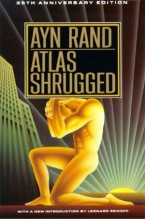 In Chapter 6 of Saving Leonardo, Nancy Pearcey turns to the crucial role evolutionary materialism has played on the stage of Western thought – and not least in the arts and humanities.
In Chapter 6 of Saving Leonardo, Nancy Pearcey turns to the crucial role evolutionary materialism has played on the stage of Western thought – and not least in the arts and humanities.
Enter the literary naturalists: writers like Jack London, Theodore Dreiser, Frank Norris, Emile Zola, and Gustave Flaubert. These chaps used fiction “to portray society as a product of evolution, subject to the law of tooth and claw,” and they often took their lead from science. To them the novel or play was a sort of laboratory in which human behavior could be studied in a detached and clinical way. “Events” – and this is key – “were to be presented without moral commentary.”
A striking example can be seen in Flaubert’s work:
In Gustave Flaubert’s Madame Bovary, the main character engages in various adulterous affairs and suffers a gradual breakdown of character until she commits suicide. Yet the process is portrayed with clinical detachment – no sympathy, no redemption, no moral to the story. When Flaubert was charged with obscenity, his lawyer defended him by arguing that the book’s scenes exhibit the same fidelity to fact as a camera. But that was precisely the problem. Events were described photographically, without moral comment. Flaubert once wrote that art should strive for “the exactness of the physical sciences.” He treats his characters as somewhat repellant specimens that he picks up with tweezers to examine.
And this is where it gets even more interesting:
Today’s readers are puzzled by the charge of obscenity, given that the book contains no explicit sexual descriptions. But nineteenth-century readers were far more sensitive to the shift in worldview. They were aghast at the novel’s naturalistic worldview – its refusal to apply any kind of transcendent perspective or moral principal – which they recognized as reductionistic and dehumanizing. The literary naturalists may have claimed to be scientific and objective, but they were not simply observing human experience. They were imposing a preconceived philosophical framework that reduced humans to biological organisms in the Darwinian struggle for existence.
Contrast #1: In the nineteenth century, this kind of philosophy was met with distrust, if not actual hostility (as evidenced by the obscenity charges). In the twenty-first, we hug it and kiss it and welcome it into the house. Oh the joy of being post-modern, you know?
Contrast #2: I’ve never read Madame Bovary myself, and frankly I have no desire to; yet I think it would almost be worth it, if only to see the antithesis of Tolstoy’s approach in Anna Karenina. Both deal with adultery – only one of them deals with adultery as sin. Talk about a fascinating study.




